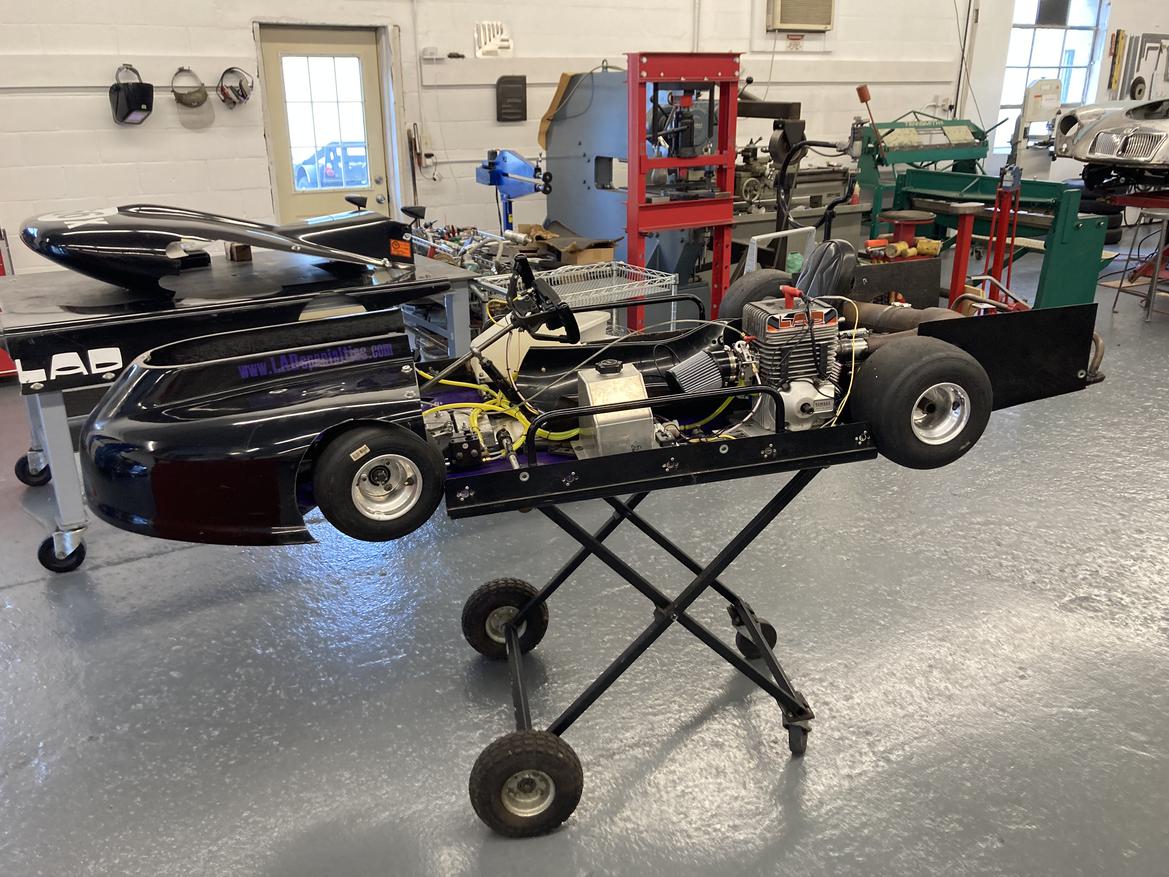We're going to Blackhawk Farms June 17-19 to run with the VSCDA again, so we're fixing some issues and prepping the car. We made a to-do list right after the Gingerman race and of course ignored it until last weekend.

So the first thing we did was cross off all the things we wouldn't have time for anymore. We'll hopefully get to all of them before we run Grattan in August.

One of the reasons for not working on the FV is that Jack's decided he needs to go karting with a laydown enduro kart and he built this one up. We have a good friend who is a national champ in one of these and Jack figures it will be good driving practice to run with him. I think it's nuts to go 90MPH on your back.

Anyway, we put the Zink back on the table and got to work.

The carb issue we were having was a fairly common one with these carbs. Over time, the top warps, usually because the four screws get overtightened. Later carbs had screws in the center area, where this one was a bit high. We put it on a surface plate with some fine 400 grit and sanded it flat again. This should solve our issue, which was an over-rich condition on right hand turns, caused by the bowl overflowing through the warped center area of the top and splashing too much gas down the venturi.

We'll eventually paint the chassis and everything inside grey so it's easy to clean and easy to see oil leaks. We had a valve cover leak that was dripping on the body sides, so we thought we'd get the insides grey now before any more oil seeps in. We just used some brush-on grey that our local paint store sells as floor paint. Cheap, durable, and easy to touch up.

We found out that there is a gearbox vent that should be routed to the catch can. Ours was covered by our rear nerf bar, so we drilled and tapped a hole nearby 1/8" NPT for a fitting and plugged the original hole by tapping it and then putting in a set screw to seal it off (a bit hard to see, but the slotted screw at the top of the housing).

While we had it apart, we put a speed hole in the exhaust mount and painted everything silver.

We had a leaking valve cover gasket, so we replaced both and adjusted the valves again (.004").























































































